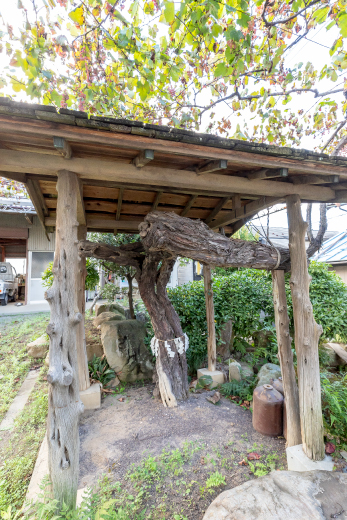This is a large old grape vine growing in Chuo-en, a vineyard in Katsunuma-Tomimachi. The circumference at the base of the vine is 1.3 m, and the vine spreads 9.4 m to the south and 8 m to the east. The grapes originally produced by this wild vine would eventually become Koshu grapes. The vine is also called “Koryu.”
Insect infestations weaken the roots of a grapevine and shorten its life, a process that can take as little of 20 years. To prevent this, a section from the weaker grapevine is grafted to a more robust variety.
While this grapevine was planted in the Taisho Period (1912-1926), before grafting became common, more than 100 years later, it remains hearty, resisting infestations and surviving a host of natural disasters to produce a bounty of delicious grapes every season.
This is thought to be the oldest Koshu grapevine in Japan. It was designated a natural monument of Koshu City in 1978.
Insect infestations weaken the roots of a grapevine and shorten its life, a process that can take as little of 20 years. To prevent this, a section from the weaker grapevine is grafted to a more robust variety.
While this grapevine was planted in the Taisho Period (1912-1926), before grafting became common, more than 100 years later, it remains hearty, resisting infestations and surviving a host of natural disasters to produce a bounty of delicious grapes every season.
This is thought to be the oldest Koshu grapevine in Japan. It was designated a natural monument of Koshu City in 1978.
